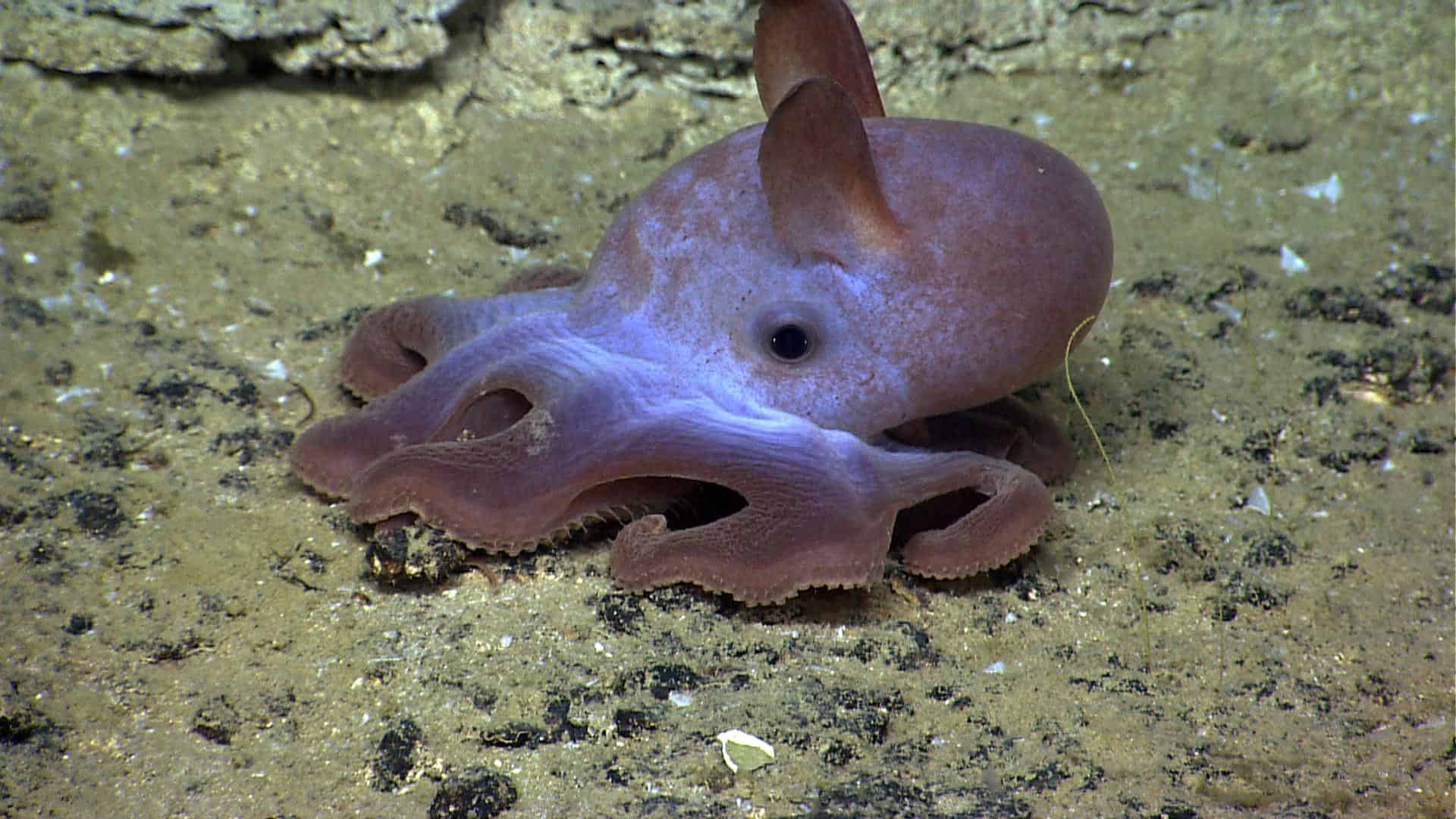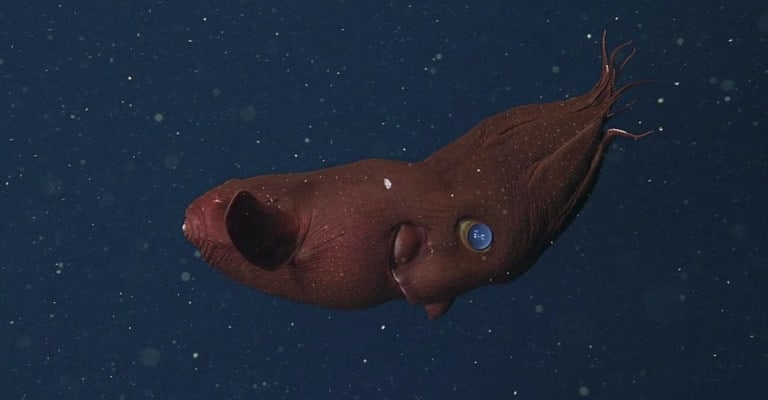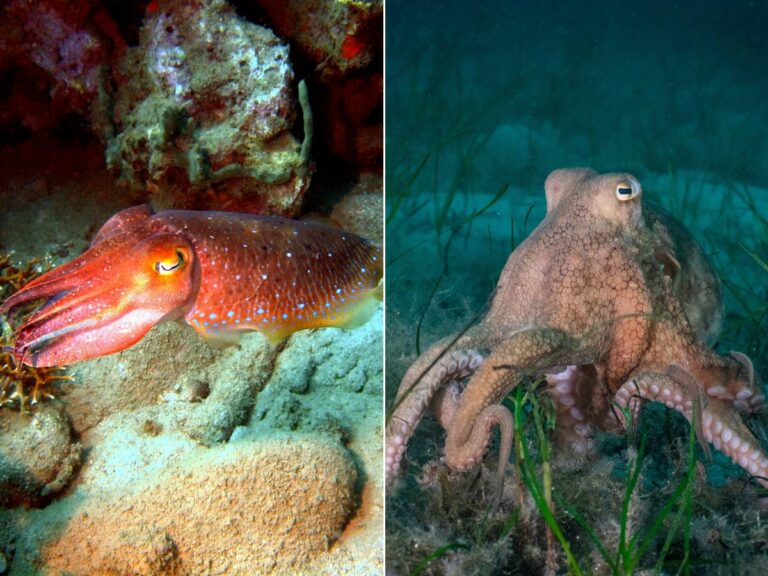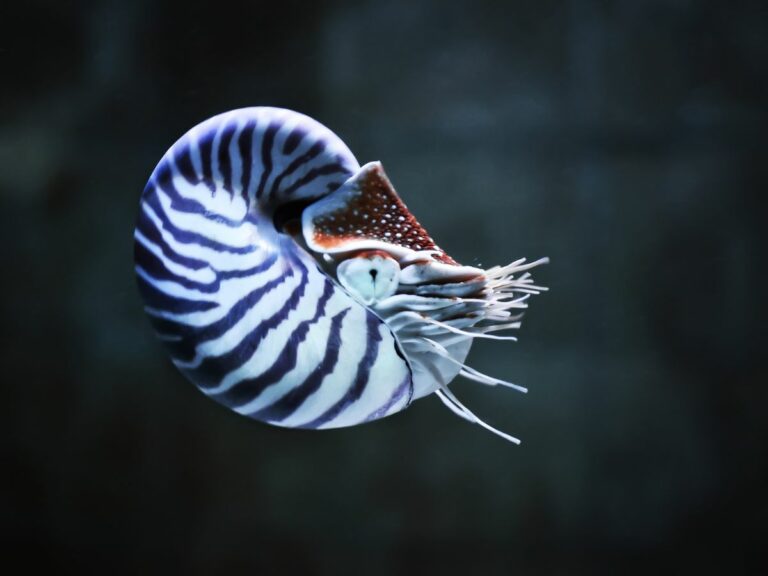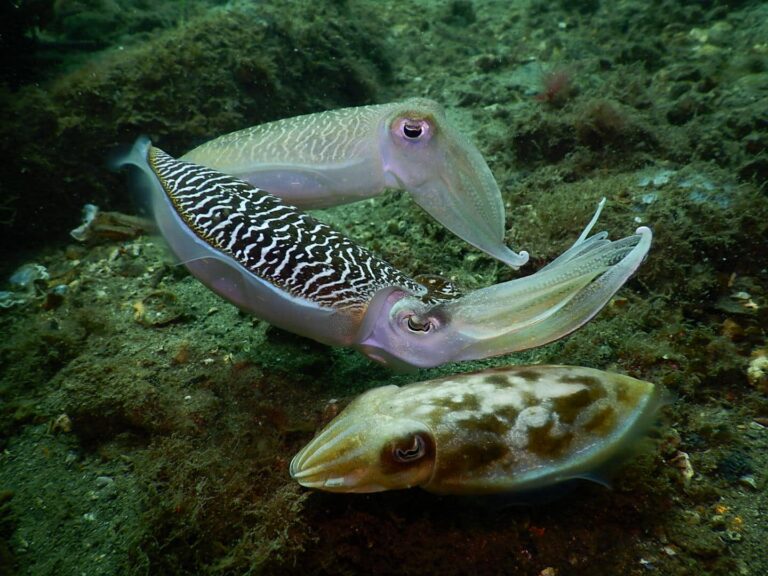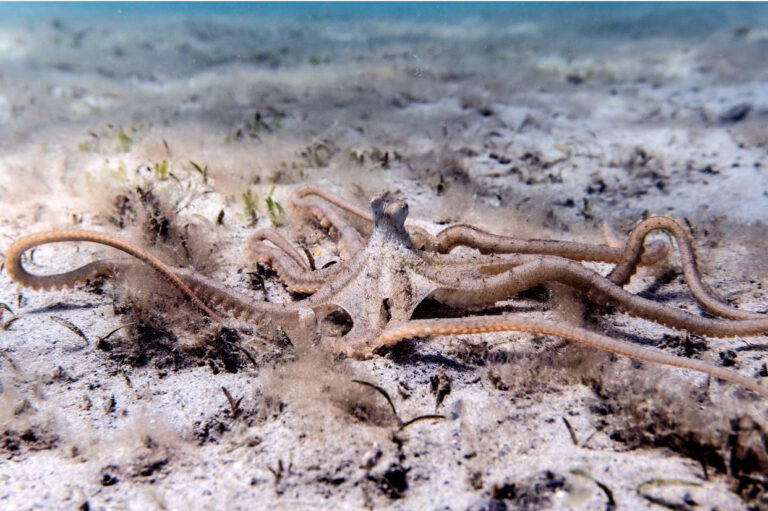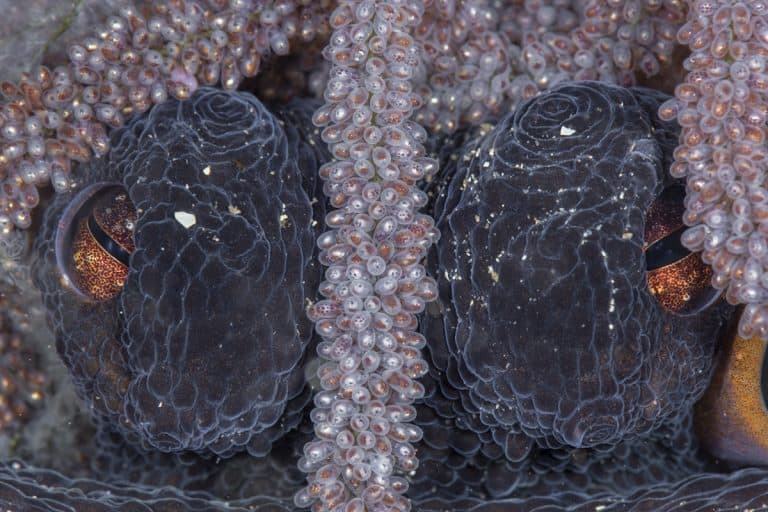5 Awesome Dumbo Octopus Facts (The Cutest Octopus Ever!)
You might be thinking, “What’s so special about an octopus?”… Well, you’re in for a treat. Dumbo Octopuses are the cutest little creatures in the sea! They have big, adorable eyes and a tiny body that make them irresistible! Keep reading as we will be looking at some Dumbo Octopus Facts to help you get to know these amazing creatures better. Are they really as cute as everyone says? Read on to find out more!
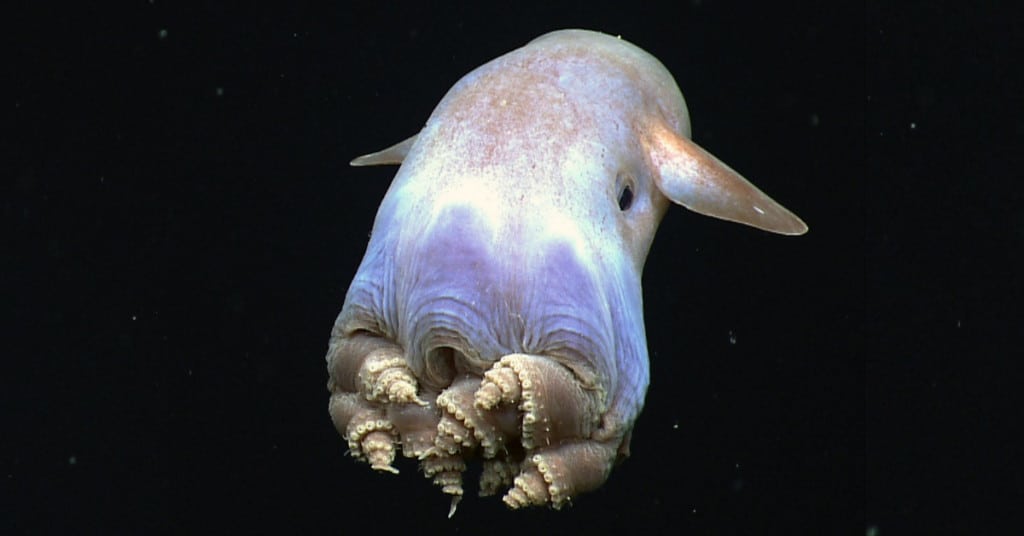
What is the first thing that comes to mind when you picture the depths of the ocean?
… A cold, unwelcoming environment where fish swim around with light bulbs on their heads?
… Nightmarish sea creatures lurking in the inky abyss with their big teeth ready to chomp down on anything that crosses their path?
Well, how about an adorable big-eyed octopus that looks like a Baby Yoda made for swimming?
You heard me!
Amongst the seemingly more ‘frightening’ looking animals in our ocean depths there exists a group called Dumbo Octopuses and they are really freaking cute!
The Dumbo Octopus – “Dumbo” Of The Sea?
The Dumbo Octopus, Grimpoteuthis, is a group of octopuses that include 14 individual species, who are all as endearing as the next.
Aptly named after the lovable flying elephant, Dumbo, from the Disney cartoon classic because of the little flaps that stick out of their mantle that look just like Dumbo’s ears. They use these like rudders on a boat to help steer themselves through the water.
The Dumbo Octopus is part of a larger family called Umbrella Octopuses who all have a web of skin between their arms.
To move through the water, they open and close their webbed bodies like a big umbrella moving along the ocean bottom like a speedy jellyfish.
What’s not to love about this cute octopus?!?
5 Fun Facts About The Dumbo Octopus
With so many of you asking us questions about the Dumbo Octopus on our Facebook and Instagram posts, we wanted to share some more fun facts about this adorable octopus.
They live where?!?
Dumbo Octopuses make their home in the abyssal zone between 9,800 to 19,700 feet (3,000 to 6,000 meters) living in perpetual darkness.
The deepest dumbo sighting was recently caught on a camera at 23,000 feet (7,000 meters) in the Java Trench in the Indian Ocean. That’s 4.3 miles straight down into the ocean!!
How do Dumbo Octopuses survive so deep in the ocean?
They survive in these depths by feeding on worms, shellfish, and small shrimp-like crustaceans called Amphipods. They have special hairs next to their suckers called Cirri that create a current towards their mouth helping direct food there.
Imagine being able to create strong winds that could blow pizza to your mouth!
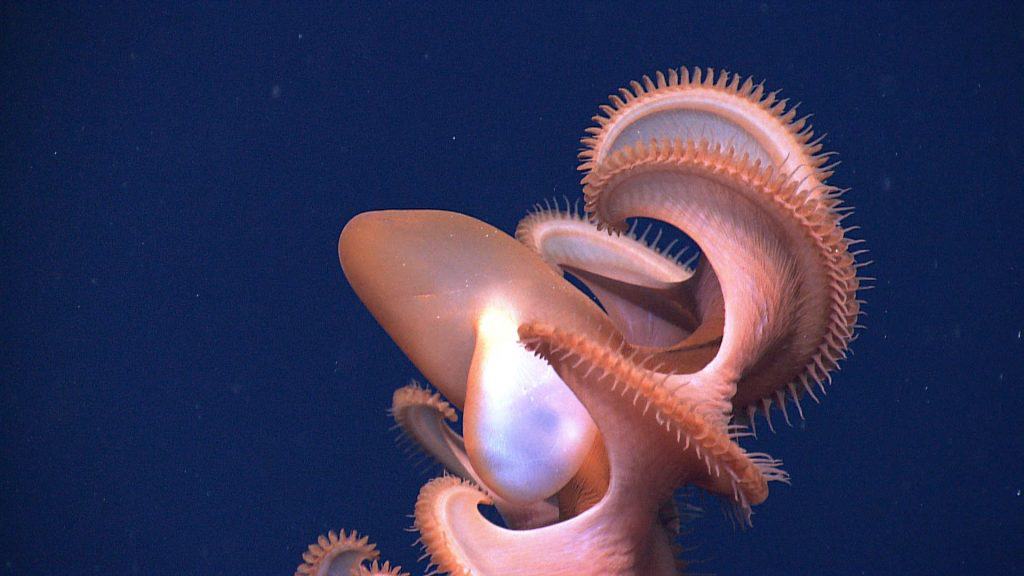
🐙 Octopus Fun Fact
“Pearl” from the beloved Pixar classic, Finding Nemo, is part of the Umbrella Octopus family. She is a Flapjack Octopus (Opisthoteuthis Californiana) who is found nowhere near the shallow waters of the barrier reef in Australia.
Real-life Pearl would spend her time in the deep sea off of the coast of Japan or the western USA.
Not only that, her famous line “Awww, you guys made me ink” wouldn’t be possible because, like all members of the Umbrella Octopus family, she doesn’t have a functioning ink sac.
Moral of this story: Don’t believe everything you see in Disney movies.
Breaking the octopus mold
Scientists are unable to make blanket statements saying things like “all octopus have _____” because of the Dumbo Octopus.
These gelatinous underwater ghosts went about breaking the octopus mold by failing to have chromatophores AND a functioning ink sac. These two adaptations are extremely important to most cephalopods, providing them with:
- Camouflage
- A way to communicate with one another
- And, to avoid predation
So, why does the Dumbo Octopus turn up their arms up at these two seemingly necessary octopus superpowers?
The answer is surprisingly simple: they just don’t need them!
Perks of living in a pitch-black abyss include not needing to hide from anyone. Predators down there are sparse so the Dumbo Octopus decided they didn’t need to put the extra energy into making ink that they wouldn’t use or chromatophores that they didn’t need to camouflage.
Just as we are slowly losing our ability to see long distances because we are adapting to new environments of staring at computer screens, living in cities, and buying our food at grocery stores, all of which only require people to be near-sighted.
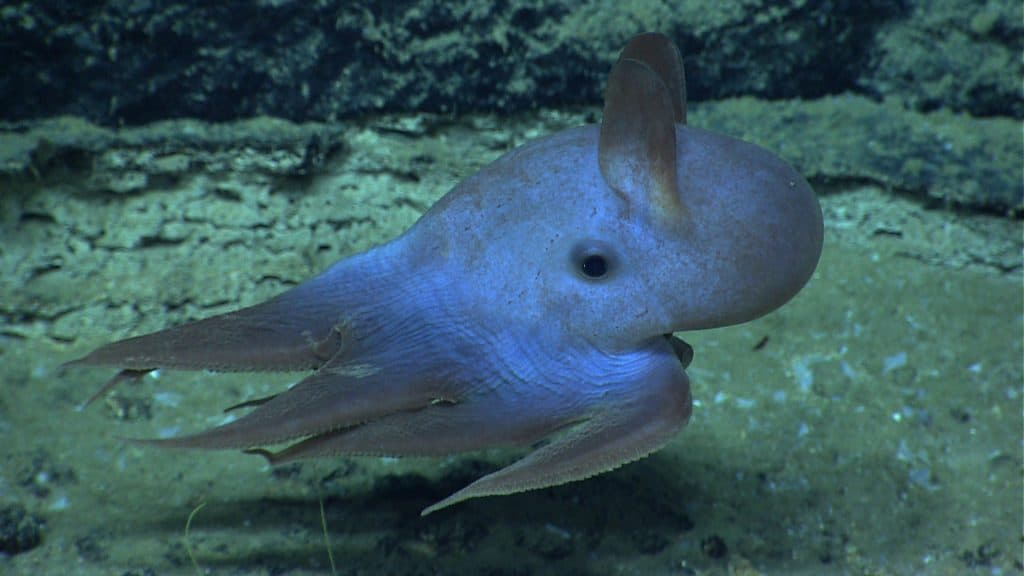
Dumbo Octopus Fact: They are ALWAYS pregnant – 24/7!
As we are constantly learning, the depth of the ocean is filled with wonder and strange things happening.
There is the dedicated Deep-Sea Octopus mama (Graneledone Boreopacifica) who guards her eggs for 4.5 years. The Female Blanket Octopus (Tremoctopus Violaceus) who makes a calcium stick for her babies to live on while she carries them around the wide-open ocean until they hatch.
Even so, the Dumbo Octopus has them all beat! Females can get pregnant WHILE being pregnant. That’s right! They are basically always pregnant.
Can you even imagine?
How is it possible for a Dumbo Octopus to be pregnant all the time?
With a limited lifespan of 3 to 5 years, the Dumbo Octopus goes about finding a mate around their first or second birthday. When two Dumbo Octopuses meet, the male will pass the female a sperm packet, which the female will store in her mantle and not use right away.
This means that females can choose when and how many eggs they want to fertilize at a time.
Why wouldn’t she want to get those sperm to those eggs immediately?
Finding a mate on the vast ocean floor is not always the easiest. Carrying around eggs in different stages of development increases their chances of reproductive success (because who doesn’t want more cutie dumbo octopuses in the world, right?!!).
That way, when the female comes across a nice coral chunk, rock crevice, or another appealing hard surface, she can lay her eggs and be on her way while still carrying developed eggs inside her to place somewhere else.
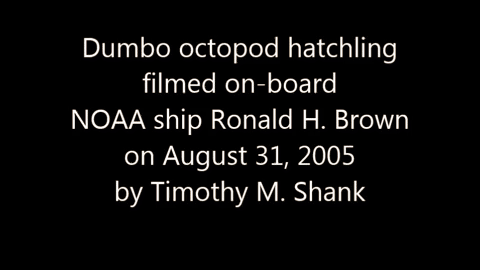
click the link to learn more!
🐙 Octopus Fun Fact
This is not actually as uncommon in the animal kingdom as you would expect with spiders, tortoises, zebras, and ducks using various methods of sperm saving techniques to fertilize their eggs on their own terms.
New kid on the ocean floor!
With more than 80% of the ocean remaining unexplored, we know more about the moon than we do the bottom of the ocean and the creatures that reside there… which is why a new member of the Dumbo Octopus family was discovered as recently as 2016!
A German survey ship, R/V Sonne, pulled up a characteristically looking Dumbo Octopus from a deep-sea trawl at around 14,760 feet (4,500 meters) near the Aleutian Islands in Alaska.
After taking a DNA sample and doing a mini MRI and CT scan to see its internal organs, scientists on the boat realized they had a brand spanking new species on their hands.
They named it Grimpteuthis imperator, the Emperor Dumbo!
Just imagine how many more of these cuties we will find from our continued advances. That’s if technology advances, which provide us with more and more opportunities to explore the ocean abyss.
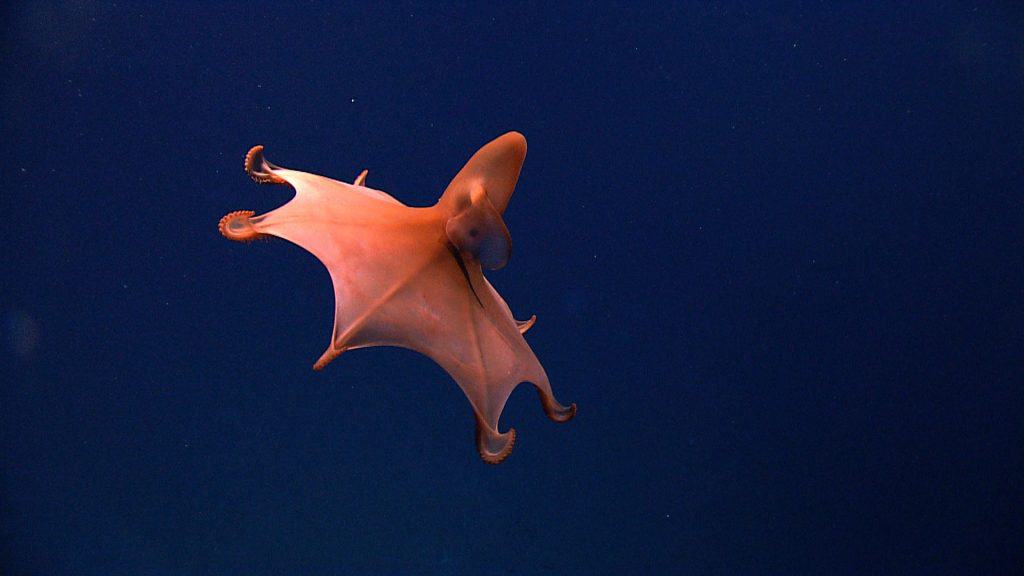
The Dumbo Octopus – Cutest Octopus Ever!
Did you enjoy learning these Dumbo Octopus facts?
If you want to educate yourself some more about all sorts of different cephalopods, take a look at our encyclopedia. Or, what we call it, our Octopedia!
Connect with other octopus lovers via the OctoNation Facebook group, OctopusFanClub.com! Make sure to follow us on Facebook and Instagram to keep up to date with the conservation, education, and ongoing research of cephalopods.
More Posts To Read:
If you enjoyed learning about The Dumbo Octopus, we recommend taking a look at some of these other profiles:
- 9 Giant Pacific Octopus Facts That Will Blow Your Mind
- Super Fun Facts About The Female Blanket Octopus
- Fun Facts About The Strawberry Squid
- Octo Chef: What Do Octopus Eat?
- Octopus Sweater: The Perfect Hand-Stitched Addition
- The Octo-Punch: The Truth Behind Why Octopuses Punch Fish
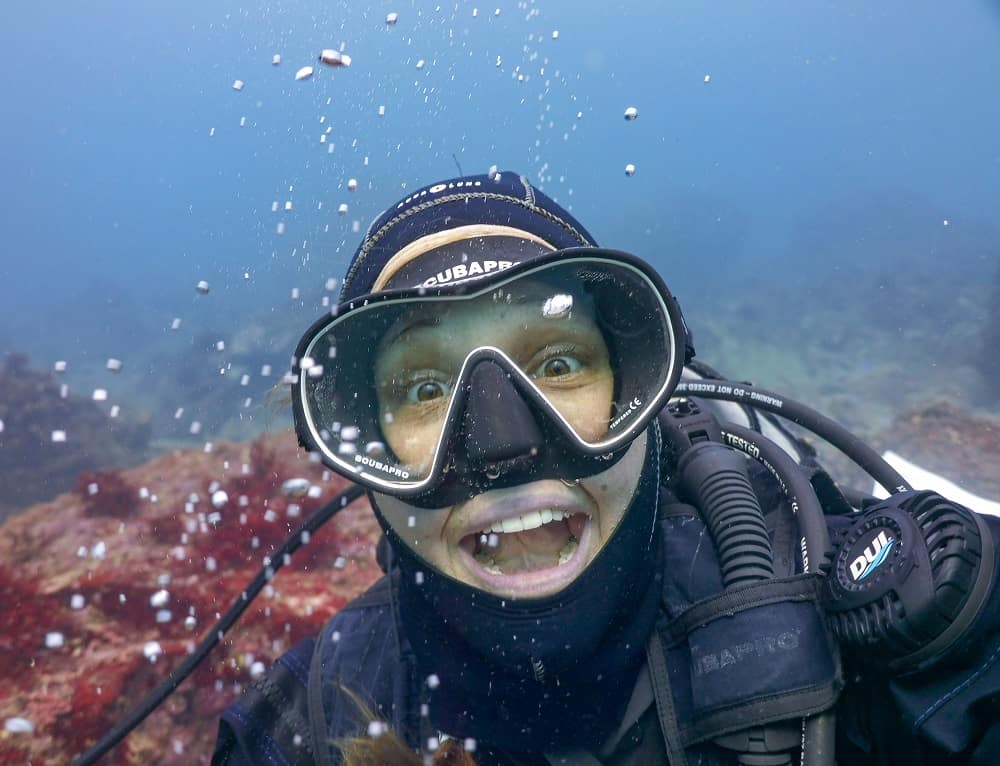
Corinne is a biologist with 10 years of experience in the fields of marine and wildlife biology. She has a Master’s degree in marine science from the University of Auckland and throughout her career has worked on multiple international marine conservation projects as an environmental consultant. She is an avid scuba diver, underwater photographer, and loves to share random facts about sea creatures with anyone who will listen. Based in Japan, Corinne currently works in medical research and scientific freelance writing!
